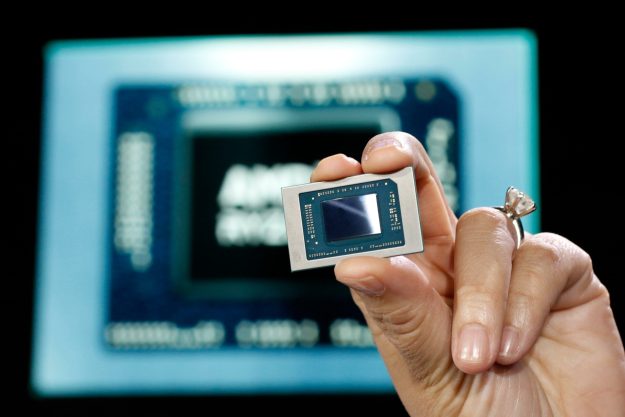
Looking over AMD CEO Lisa Su’s keynote speech at Computex 2019, where she debuted the landmark Ryzen 3000 CPUs and RX 5000 Navi graphics cards, there’s one phrase that appears again and again: leadership. AMD’s products are exciting and they are what will drive its stock up and firm its hold on certain important computing markets. But what AMD looks poised to achieve more than anything, is cement its place not as a second fiddle chip maker, but as a leader across the industry.
For much of the past decade, AMD has trailed behind Intel and Nvidia in the CPU and graphics markets. While it had some wins in certain sectors, it has been a long time since AMD could even grasp at the performance crown in either industry, and that’s lead to a diminished market share and an overall public persona as the lesser of the two major companies in each of those major markets. But that’s something it’s looking to change, and the tone of the announcements at this year’s Computex and the particular wording chosen by Lisa Su throughout the presentation, cements this as the main goal of AMD for this year and beyond.
“2019 is off to an incredible start for AMD as we celebrate 50 years of innovation by delivering leadership products to push the limits of what is possible with computing and graphics technology,” Su said at the event. That word, “leadership,” is how she would repeatedly describe AMD’s advancements in CPU technology, in their partnerships with other major industry players, and in their new in-roads in the datacenter space.
Its products of today and tomorrow support this idea. It has hounded Intel over the past two years with its increase in core counts and major jumps in single-threaded and multithreaded CPU performance, forcing the blue team to add cores to its mainstream parts, and to rush along its own die-shrunk efforts, with a limited Ice Lake release in the mobile space. And now AMD looks set to leapfrog Intel with a shrink to 7nm, in raw performance in productivity tasks, and perhaps even, for the first time since the early 2000s, in gaming too.
In both the home-user and datacenter space, AMD CPUs are poised to outperform, undercut, and evolve beyond the competition. That’s the kind of leadership AMD is talking about and it’s the position it is gunning for in the industry. It isn’t just looking to be a great alternative to Intel, it’s looking to make Intel an alternative to AMD.
Although AMD’s new RX 5000-series graphics cards are unlikely to compete quite as favorably with Nvidia as its CPUs will with Intel, it’s still off to a strong start. The new GPUs are already poised to form the core component of Sony’s next-generation PlayStation and may well do so with the next-generation Xbox too. Google’s game streaming Stadia service will use AMD graphics as well.
That means AMD products entering the homes and browser-streams of gamers all over the world in the coming years, before we’ve even begun to discuss the potential affordability and performance capabilities of new desktop GPUs.
Alongside the product announcements at Computex 2019, Lisa Su made a major point of bringing on stage technology leader after technology leader. From Microsoft, which AMD is partnering with to deliver the fastest cloud computing the world has ever seen, to motherboard and laptop partners like Asus and Acer, AMD has courted and secured firm handshakes with major industry players.
Asus alone is looking to launch more than 30 motherboards for Ryzen 3000 CPUs, suggesting a major commitment and investment from the company in AMD’s new line of products. It’s not the only one either.
In 2019 AMD is doing more than releasing new and exciting products for enthusiasts and gamers, it’s stepping out of the shadows of its main competitors for the first time in a long time. While it will have a stiff battle ahead of it to combat the long-standing mindshare dominance of Intel and Nvidia, Lisa Su’s confidence in her company’s ability to lead us into the future was on full display during her keynote.
First party benchmarks are always overly positive and there are still details we want to learn about AMD’s next-gen CPUs and GPUs, but there was nothing tentative about their debut. This is a battle AMD believes it can win and if there was ever a time it seemed poised to do so, it’s now.
Editors' Recommendations
- AMD makes older PCs more upgradeable once again
- AMD still hasn’t made the big APU dream a reality
- AMD just did Nvidia a serious favor
- Here’s how AMD counters Nvidia’s big RTX Super launch
- AMD may finally launch what we’ve all been waiting for later this year





